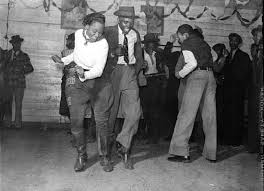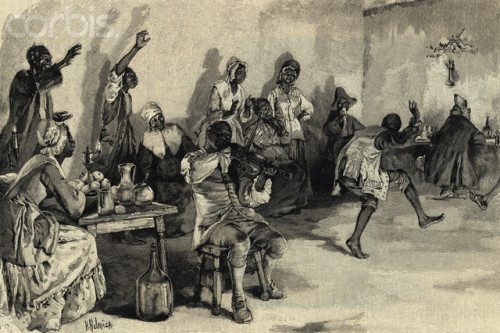Origin
Folk music, often melancholy, told the story of plight of Africans who were indeed disadvantaged slaves. Often referred to as the music of the lower class, folk music was transmitted by word word of mouth in a traditional form. Brought from homelands in Africa and across the sea on slave ships to the Americas, folk music was compiled of songs and accompanying music stemming from the forced servitude, absence of rights and the everyday difficulties endured by the common slave.
Elements
While the words of folk songs tell the story of the oppressed, the music always finds an audience willing to listen and enjoy. To create this interesting form of music, many different elements come together to accumulate it. A few prominent elements include call and response, story-telling, polyrhythm, work songs and instruments. Focusing closely on instruments, the banjo, djembe, and patting juba are all used in creating valuable folk music. Let’s dwell in the importance and influence of the patting juba specifically.

THE PATTING JUBA
Whites banned the use of drums, a prominent and special instrument to African culture, forcing slaves to replenish the void left by the ban on drums. Slaves soon developed ways to imitate the means of creating rhythm as the drum had done using whatever they could get their hands on. Household items, spoons, jugs, washboards and even their own bodies were used to create a rhythm. The use of hands and body as musical instruments in form of a dance is to be called the “patting juba”. The slapping and clapping of hands against the body mimicked the drum patterns. Cleverly, slaves did not abandon their African rhythms yet adapted and created new forms of them.
Influence
The bond between slaves and the united struggle is a theme still expressed in African American music today. Folk music brought a sense of togetherness to genres like blues, jazz, hip-hop, country, etc. Influences from Juba, specifically, are found in tap dance, the jitterbug, the Charleston and more current street dance moves

Social Implications
White Americans realized early on that slaves used music as a way of communication. Slaves used songs and drums specifically to organize slave uprisings and rebellions. Making this realization Whites quickly banned the use of drums to stop interrupt the connection between the drumming, communication and resistance. This serves as a concrete example of the oppressive nature of Whites; eliminating the slaves most prominent way of communicating.
Commodications
Folk music originated in African culture. It was used as a form of art that illustrated the everyday struggle of the enslaved. These songs and music style accumulated through oppression and hard times. Folk music is simply not made for the white man and should not be appropriated and used for his benefit in any way. However, folk music has been reassigned and rearranged to fit the plight of White people. By doing so, they have efficiently hid the truth of this music style and abandoned it’s true origins so much that even I had perceived folk music as white mans music. Artist like Bob Dylan and Johnny Cash are those who we think of as popular folk artists, while disregarding our true folk artists such as Lead Belly and Odetta.



